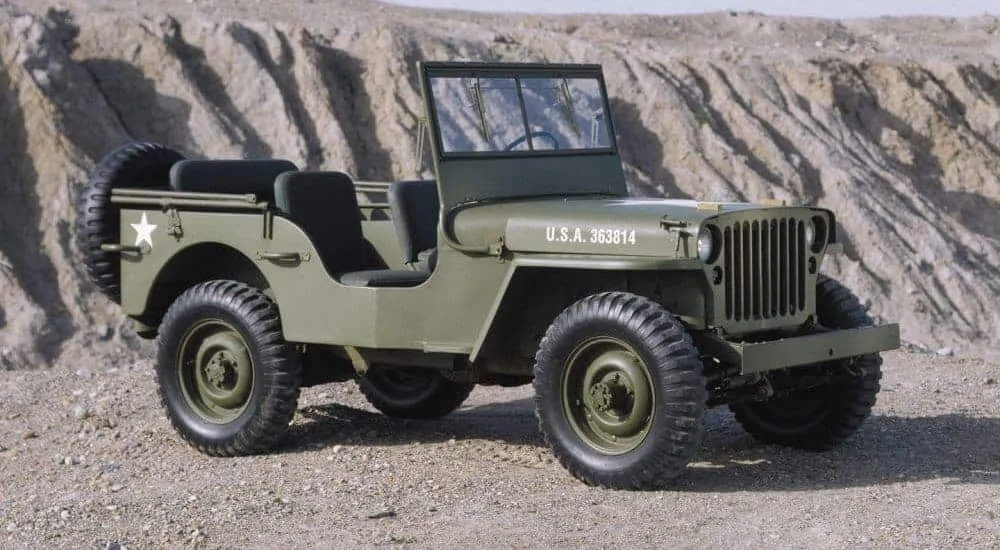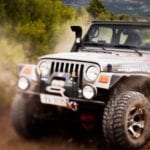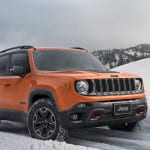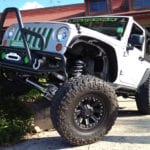There’s no denying that Jeeps are a special type of vehicle. From the tradition of Wrangler owners waving at each other on the roads to the culture encouraging off-roading and adventure, Jeeps are sure to bring lots of joy into their owners’ lives. In fact, you could head on down to a Jeep Dealership in Colorado Springs, Boston, or points in between and buy one today! That’s all it takes to become a member of the beloved Jeep family of owners. Let’s dive into the history and culture around Jeeps and see why the brand is so special to so many.
Jeep History in the 1940s
In 1940, the first ever Jeep was made! As World War II was looming, the Army was looking for companies that could fashion a “light renaissance vehicle.” In just one short year, three automobile manufacturers created the template for the Jeep America now knows and loves. On Veterans Day, the new car, called “Quad” for its 4×4 system, was delivered to the U.S. Army!
After copious testing and quality assurance, the U.S. sent these new Jeeps to their allies in Russia and England under the Lend-Lease program. The model that was shipped out was an improved version of the Quad. A handbrake, single-piece wheels, rounded door cutouts, and other features were added to improve the Quad’s performance. This new and improved model was called the Willy MA.
The next model that was built, the Willy MB, became used by the U.S. army. In fact, many men who served developed strong bonds with their Jeeps as they embodied the ruggedness of battle but still drove and ran well. The car proved to be efficient and reliable during battles, earning it high praise and regard from U.S. soldiers. Fun fact – one Willy WB even earned a Purple Heart during battle and was sent home. Additionally, General George C. Marshall, former U.S. Secretary of State, called Jeeps “America’s greatest contribution to modern warfare.”
Marshall was right indeed. The Willy MB proved to be versatile, acting as efficient ambulances, and also able to trek across all different types of terrain while still allowing room for .30 or .50 caliber machine guns.
Following the war, the Willy MB had made such a great impression on soldiers that Jeep decided to create a civilian Jeep brand vehicle. The resultant vehicle resonated well with the 5.5 million farmers in the U.S. at the time. The new vehicle, named the CJ-2A, was marketed to the public as “The All Around Farm Work Horse.” It surpassed the efficiency of old farming technology, allowing farmers to operate it for 10 hours a day without overheating the engine.
Additionally, the CJ-2A had better shock absorbers, springs, larger headlights, a spare tire, a beefier clutch highway speed ability, and more comfy seats. Once 1946 rolled around, Jeep created yet another iconic vehicle. Named the 463 Jeep, this car was the first all-steel station wagon in America at the time. The all-steel was incredibly innovative as it was virtually no-maintenance and was not prone to weathering. Fun fact – this car’s fold-down tailgate is actually where the tradition of tailgate parties came from!
Closing out a huge decade for Jeep was another new vehicle: The Jeepster. The Jeepster was a youthful and sporty convertible designed to be a low-priced American sports car (they started at $1,900). Though it was marketed as a go-fast sports car, the actual performance was not up to par. As a result, the Jeepster brought in lower sales numbers than expected.
Jeep History in the 1950s and 60s
The major development for Jeep in the 1950s was creating a vehicle made for recreation. With engineering advances and the help of grassroots enthusiasts, a new era of Jeeps was created. Additionally, Jeep engineered an ambulance vehicle that was used by the U.S. Army. This new model was called the CJ-4MA-01 and sported flat fenders, an enlarged door for easy access, and a lengthened trunk area to carry the wounded.
Back in the rest of society, Jeep was also making progress for a civilian vehicle engineered to be powerful and used for recreation. In 1953, Jeep came out with the CJ-3B – this model was vastly different than the earlier version that was used in battle. It sported a much more powerful engine (25% more horsepower) and a much taller hood to accommodate the new power.
In 1954, Jeep built upon the newest model to create the CJ-5: A civilian Jeep for the masses. This model was better in every aspect of its engineering; more powerful, more comfortable, and more off-road capable. The CJ-5 took off in popularity, and Jeep was able to market it in over 150 countries worldwide. In fact, it was the longest run manufacturing of any vehicle Jeep has ever made.
After tapping into the outdoorsy, recreational market, Jeep then made a vehicle that was its gaudiest to date. Intended to be used at resorts, the DJ-3A sported pinstripe seats and came in shades of rose, coral, white and blue. In the 1960s, Jeep manufactured even more vehicles with many practical purposes. This decade produced a van intended for postal service, the first luxury 4×4 SUV and a full-size pickup truck.
The Jeep Wagoneer (the luxury SUV) included modern styling and an attractive exterior. Created by the world-famous designer Brooks Steven, this car was in production for over 28 years and became a staple for many American families.
Later on in the 1960s, Jeep capitalized on the growing interest Americans had in leisure and off-roading activities. Recognizing this, Jeep created the Jeepster Commando, a sporty vehicle. There were less than 100 created, and to this day, are one of the most sought after Jeep vehicles for collectors and Jeep enthusiasts.
Jeep History in the 1970s and 80s
Alas, the 1970s! This decade was iconic for not just the disco parties, but for the Jeep Cherokee, a staple 4×4 for Americans to this day. All in all, Jeep created six different models and remained leaders in the market for 4×4 vehicles.
Before the Cherokee came out, Jeep created another iconic off-roading vehicle: the CJ-5 Renegade. They offered special striping on the hood and seats, a roll bar, and oversize white-walled tires.
Then, in 1975, the Jeep Cherokee was available to the public. It was a newer, sportier version of the Wagoneer featuring racing details that were magnetic to younger, more daring off-roaders. In February of 1974, the original model won the Four Wheeler of the Year honor. It was offered in two different models, and eventually, a 4-door model was released as well.
In the 1980s, Jeep expanded more upon the Cherokee model, creating a truck for the modern farmer. After conducting extensive market research, Jeep decided the future of automobiles was in compact SUVs, and as a result, they funneled 250,000,000 into the design and creation of the new compact XJ Cherokee. The result was revolutionary: a lighter, smaller 4×4 vehicle with lots of availability for aftermarket modifications.
Jeep Culture
In addition to the superior engineering and functionality Jeeps offer to so many, they also offer a less tangible but still obvious perk: an awesome, adventurous culture. When you talk about Jeep culture, it’s impossible to skip over the Jeep wave.
The Jeep wave is a tradition in which Jeep owners must wave at each other as they pass on the roads. The Jeep wave means many different things to different people, and the rules of the wave are speculated on by many. Most commonly, it’s a rule that the Jeep driver in the vehicle with more off-roading capabilities or the better model initiates the wave to an oncoming Jeep driver.
So, where did the wave come from? There are a few potential theories we can consider:
- Theory #1: Back in World War II, Jeeps were used to transport the wounded, carry supplies, and deliver mail. Some believe that the wave started as a method to distinguish ally from enemy.
- Theory #2: Once the soldiers returned home from war, many of them purchased Jeeps they had come to love during battle. So when on the roads, drivers waved at each other, knowing they were most likely a fellow veteran.
- Theory #3: As more civilians purchased Jeeps for recreation, the drivers began to wave at each other to acknowledge their shared interests and hobbies.
Clearly, Jeeps are an iconic vehicle that have shaped many areas of American culture and interest. Always ahead of their time, Jeep was able to create the products that Americans wanted before they even knew they wanted them.






